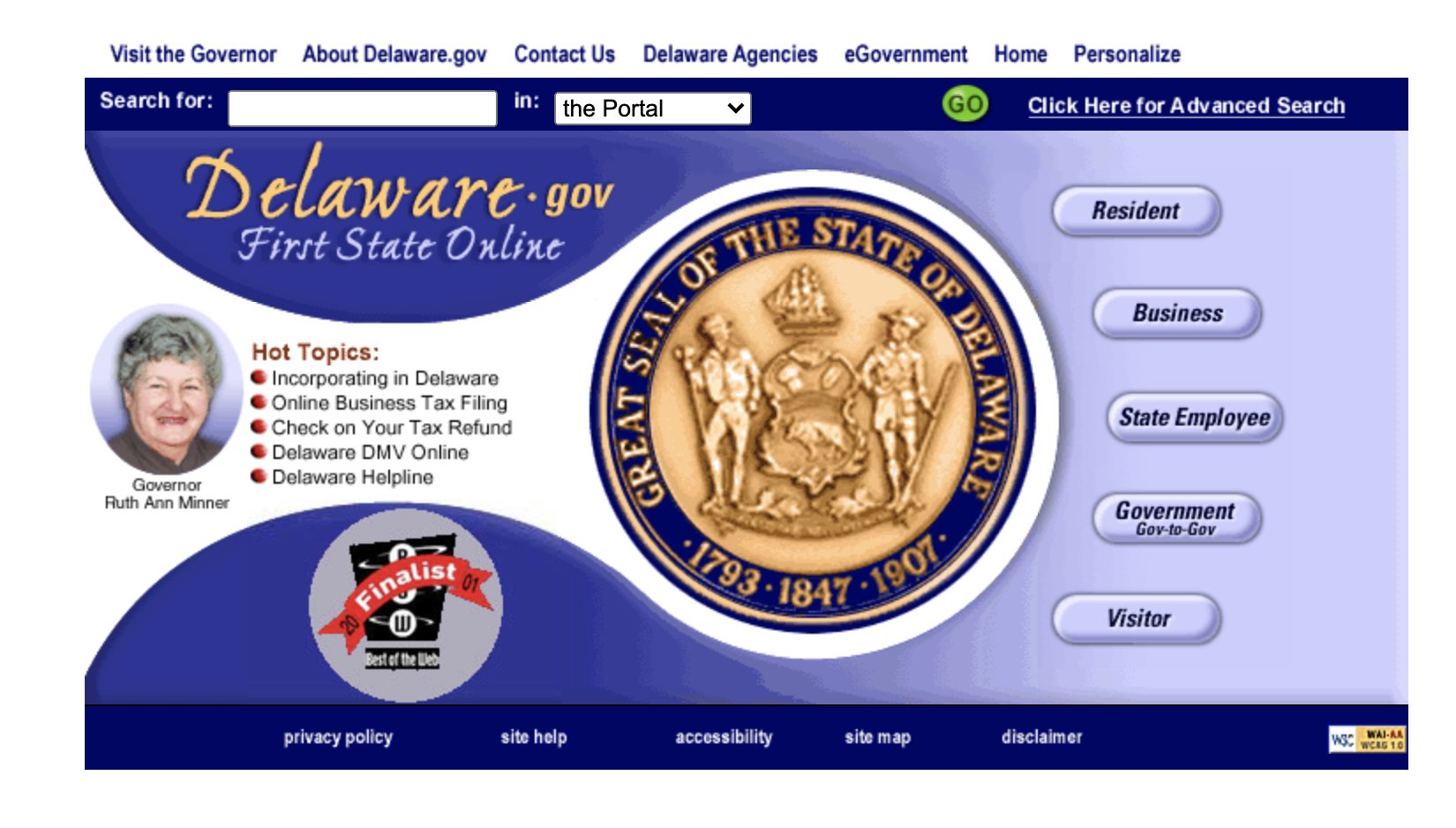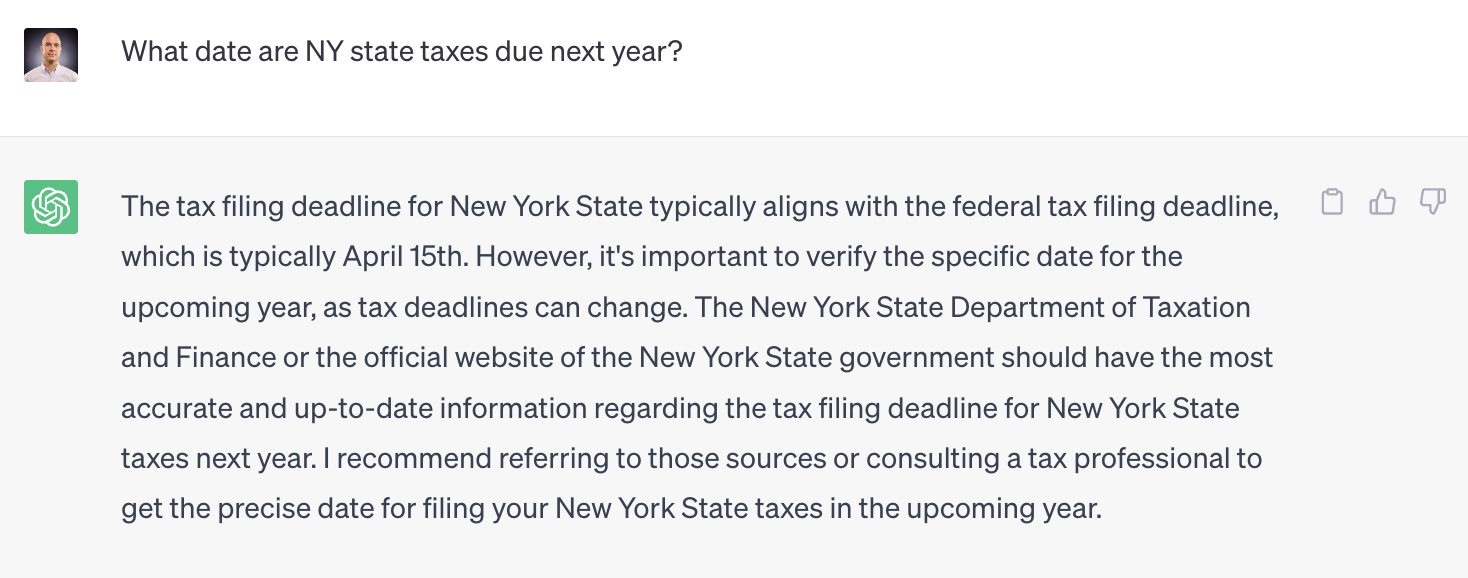How AI and LLMs will change government websites
One of the first jobs I had in government technology was to lead a team that was charged with completely overhauling the website of the State of Delaware.
And while I did this work over two decades ago, I see some of the same dynamics at work today that will shape the future of government websites in the years to come.
Coming into office in 2001, the State of Delaware’s new leadership — the first administration to hold office entirely within the internet era — made a priority of updating the first-generation, largely obsolete website that had been created by the previous administration. This new site would incorporate some ideas that (at the time) were innovative and hadn’t yet been adopted by very many state governments.
The new state website would be organized not according to the state’s organizational chart, which usually meant information was grouped by state agency. Instead, web content would be organized around what users intended to do when they accessed the state’s website. This resulted in separate pathways to information for citizens, businesses, state employees, and other groups of users, as can be seen in the screenshot below. This was a novel idea at the time, when most government websites were still organized according to departments or offices, and users had to know which part of state government held the information they were looking for.

Putting search first
In addition, Delaware’s new website would — for the first time — incorporate search as a way for users to find the information and services they were looking for. One of the state’s technology partners in this effort was a leading company in the advancement of search technology — Yahoo! And while the technology landscape changed dramatically in subsequent years, the impact of search engines like Yahoo! and Google on the way people consumed government information was indelible.
Since the early 2000’s, governments have restructured their web content to adapt to people’s expectations that content should be searchable, and that a search engine like Google would be the starting point for their journey to find the information they needed. Governments overhauled their web content to be indexed more efficiently by search engines by doing things like adding sitemaps and robots.txt files to their sites. They became more invested in the discipline of search engine optimization (SEO), and partnered directly with search companies. They’ve created shared services to support agency efforts to incorporate search into their website. And, like private companies, they invested time and money to ensure their content was included in the top results when people searched for relevant information through Google or other search engines.
When search became the predominant way that users looked for information from governments, agencies had to adapt to ensure that their content was as discoverable as possible by the people that needed it. Today, as artificial intelligence (AI) and large language models (LLMs) like ChatGPT become more powerful and more widely used, government websites and content will need to adapt again in response to ensure they are meeting user’s expectations for how they look for and locate relevant government information.
The AI future of government websites
Much like search engines that spider the internet to index information to return the most relevant information to users, AI and LLM tools also consume government information on the web. Large language models are trained on large amounts of web content to map the relationship between words and phrases, which enables a user to interact with them through conversational prompts.

One of the chief concerns that has arisen as LLM tools have become more widely available is accuracy. These tools can sometimes provide inaccurate information — sometimes referred to as “hallucinations” — in response to specific prompts. This is a major concern for governments because government agencies are often the authoritative source of information on subjects like taxation, public health and safety, and public benefits. Governments, however, can take the lead in adopting practices that can dramatically improve the responses generated through LLM tools, such as the document question answering pattern, which retrieves source material to contextualize the model and increase its accuracy and performance.
By thinking carefully about how government web content is published, the choice of language that is used, and by bundling instructions for LLM tools into websites, governments have the potential to greatly enhance the quality of LLM responses. This approach could open up an entirely new avenue, one that is simpler and easier to use, for the many different constituencies that government agencies serve.
At Ad Hoc, we are working with LLM tools to understand their potential, their limitations, and how they can best serve government agencies. We can help make your agency’s web content LLM-ready. As the people that use government services come to expect LLM-powered conversational interactions with agency websites, we can help your agency get ready for the coming change.
Related posts
- What AI and Large Language Models can bring to government
- Open data and AI readiness
- Parking signs and possible futures for LLMs in government
- Announcing the Platform Smells Playbook: Diagnose and fix common problems with your technology platform
- Using open-source LLMs to optimize government data
- Using generative AI to transform policy into code
